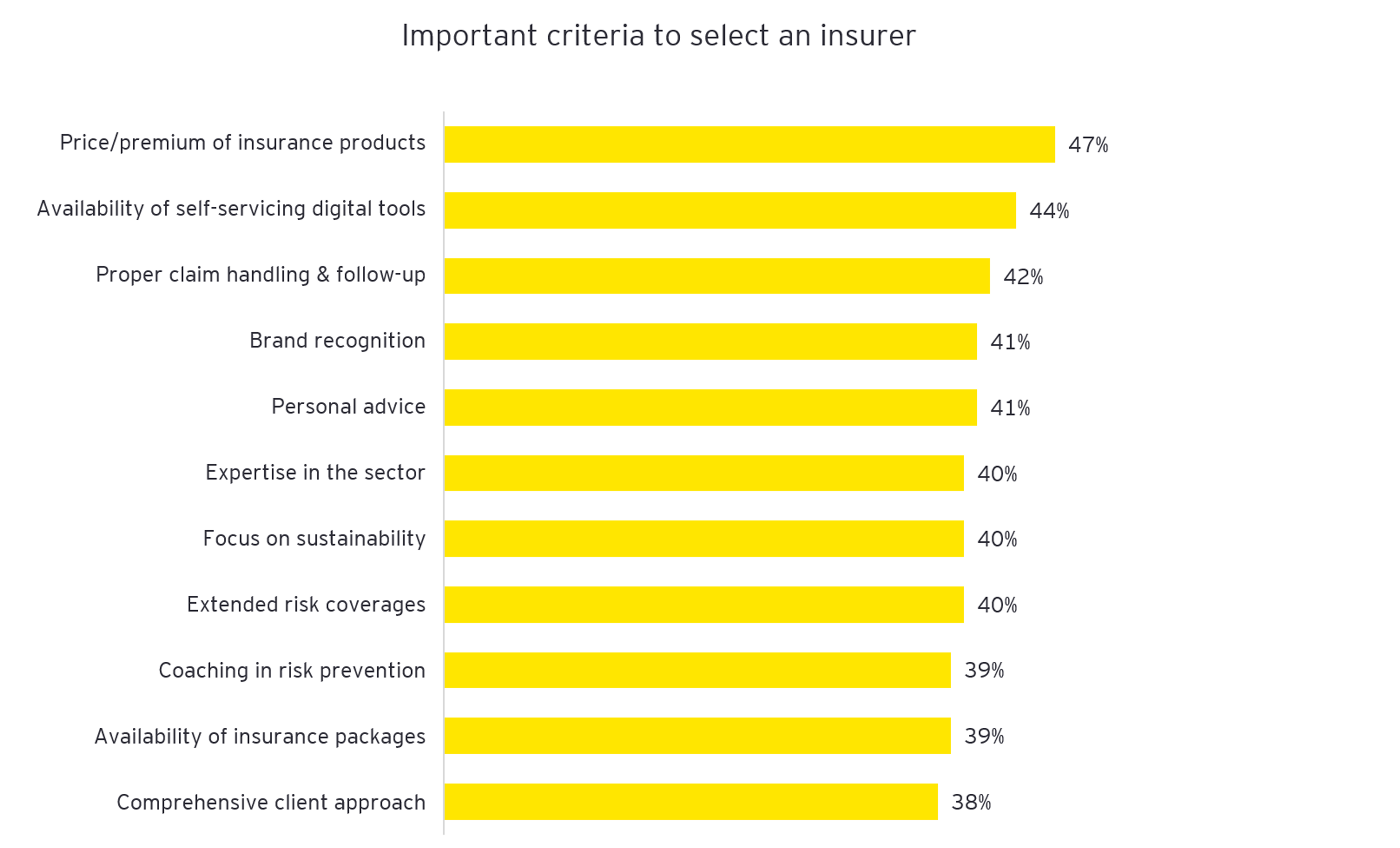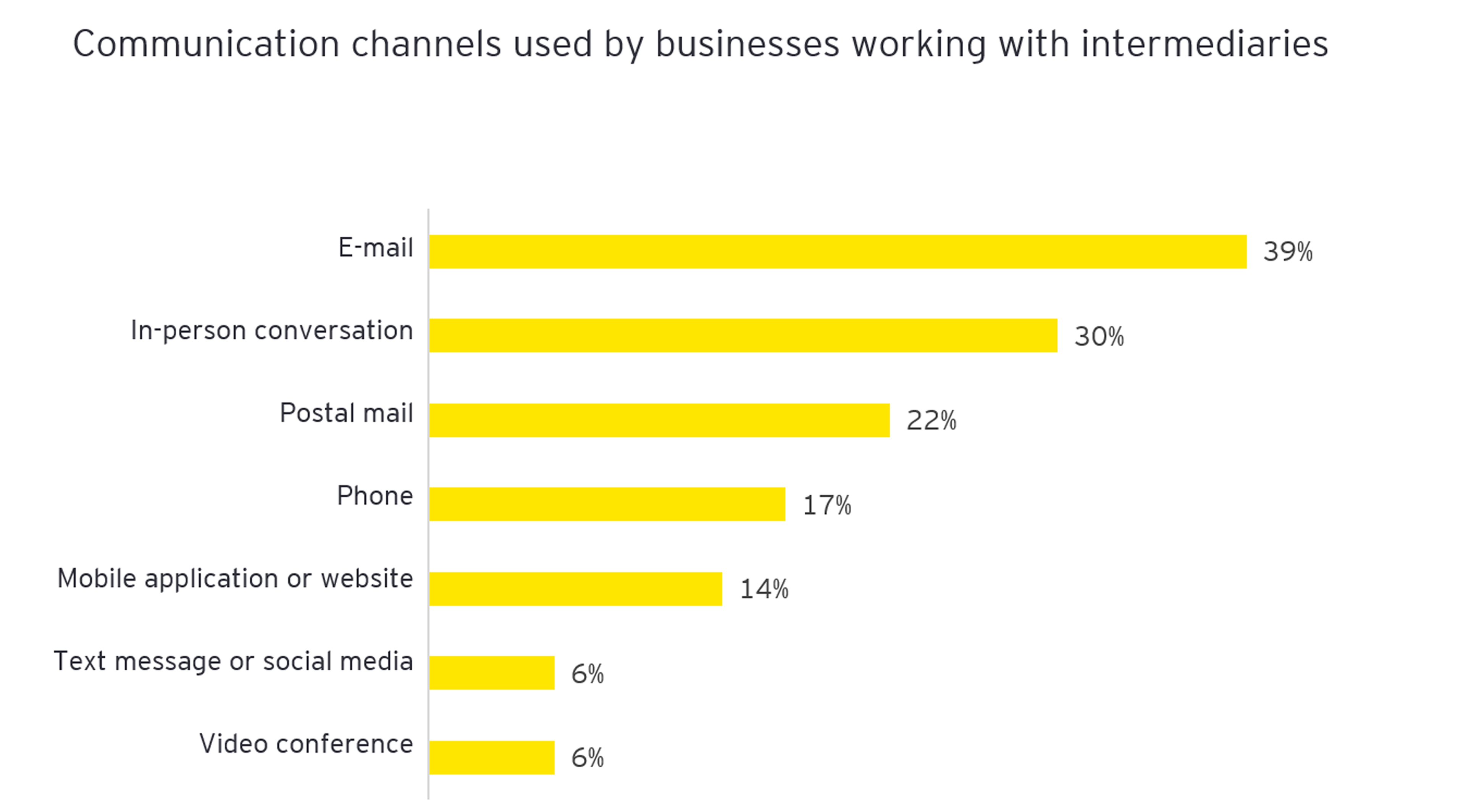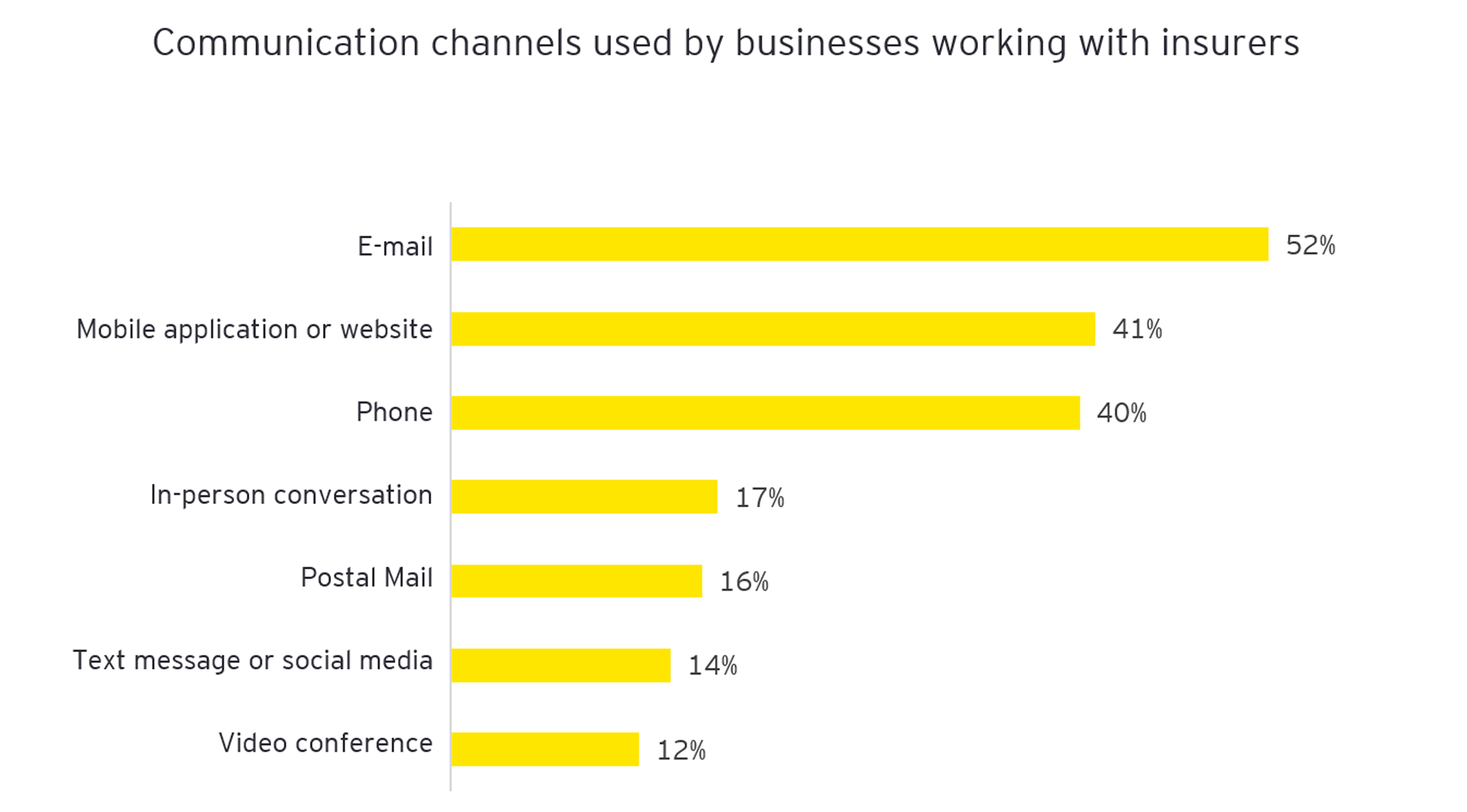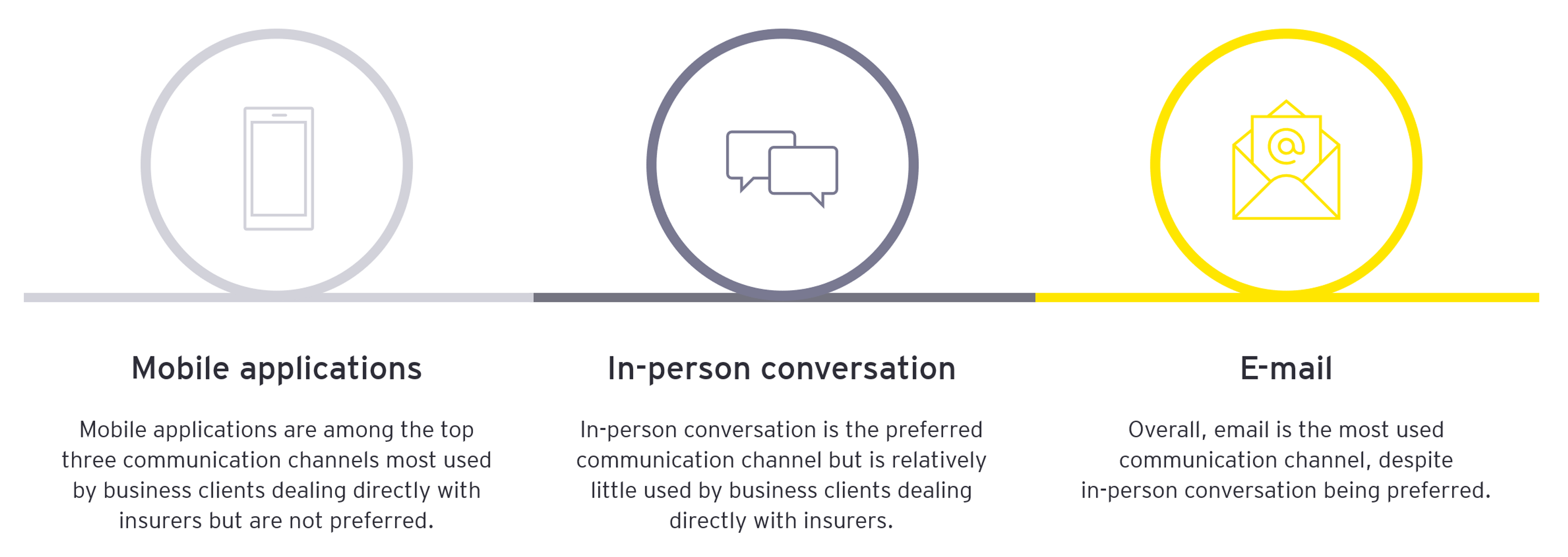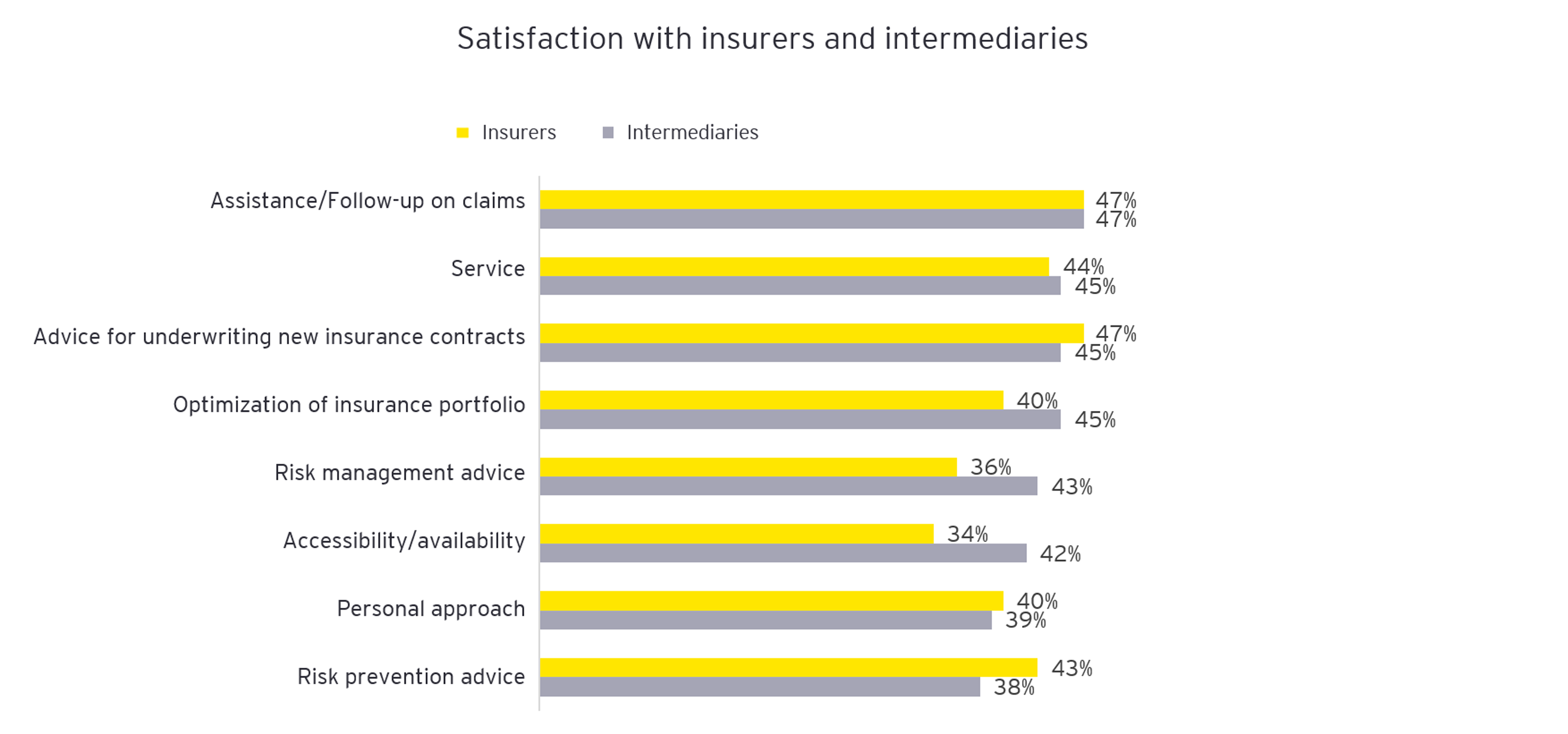More about the EY Insurance Barometer 2023
Newsletters EY Belgium
Subscribe to one of our newsletters and stay up to date of our latest news, insights, events or more.
Summary
While both intermediaries and insurers score an almost equal satisfaction level for their services, intermediaries and insurers can leverage on the different focus points highlighted in this article to better serve their business clients with 11 to 250 employees. For e.g. intermediaries can strengthen their physical and email communication channels to nurture stronger relationships. On the services front, insurers can prioritize customer satisfaction and experience by focusing on more competitive pricing of insurance products and by offering more self-servicing portals.


